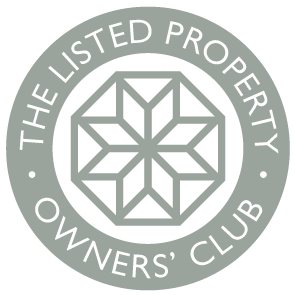Under-insurance
With 25 years’ experience of the hazards of listed property ownership, The Listed Property Owners’ Club has first-hand knowledge of the complexities involved when choosing the correct insurance for your home. Your home is probably the biggest investment you’ll ever make, and when that home is listed you need to take extra care to ensure that it is properly insured. Here, the Club provides details of 3 common misconceptions leading to under-insurance of listed homes, and what you can do to ensure you are adequately covered.
The buildings sum insured represents the total rebuilding value of the property, not the market value or ‘estimated maximum loss’ (EML). The total rebuilding value represents the amount of money required to remove debris in clearing the site, cover architect and surveyor fees, and rebuild the property as it was prior to the loss. The market value takes into account a whole host of other factors such as value of the land, proximity to stations / schools, desirability of the town or village as well as the size of the property. It is not uncommon for the buildings sum insured to exceed the market value, even in today’s property market. Generally we see properties in central town or urban locations with a market value greater than the rebuild, and properties in a more rural setting have a rebuild greater than the market value. The two are loosely linked but you would certainly not want to use the market value to insure your property as you are most likely over or under insuring the building, which presents problems either way. If you are over insuring the buildings you are effectively paying for more insurance cover than you need, whereas if you are under-insuring the buildings an insurer may apply ‘average’ to any settlement in the event of a claim, or you would need to fund the difference yourself if there is not enough money in the pot to repair or rebuild the property. Application of Average is a practice generally not applied by our insurance panel however much of the market will reduce a claim settlement by 20% for example, if the property is deemed to be under-insured by 20% – a decision that is normally made by a loss adjuster.
In the case of a listed property your conservation officer and local council would most likely require the property to be rebuilt as near as possible to represent the original in order to preserve the character and historic significance of the property. It is a common misconception that the buildings sum insured should only cover the amount you think you would need to rebuild something modern in it’s place. Alarmingly some of the cheaper less reputable insurers in the market will pay out on claims assuming modern materials will be used, however it is very unlikely that the council would de-list a property following an incident. Sadly we do see large fire losses at listed properties, generally as a result of electrical faults or wood burners, and these are invariably always reinstated rather than demolished. Even if you are insuring for the rebuilding value given by a surveyor, the true rebuilding cost can exceed this amount so it is always worth ensuring that your policy offers some kind of extension to the rebuilding figure as a contingency. If the rebuilding value does exceed the sum insured following a loss and the council/conservation officer require reinstatement of the building it will be down to the owner to fund the difference.
A buildings sum insured is normally calculated by a surveyor using a cost factor (e.g. £4,000 per square meter) multiplied by the area of the property. The issue comes in setting an accurate cost factor. Using online calculators is fine for non-listed properties that are built of standard construction however they will not take into account the specialist trades that may be required to use period rebuilding techniques, reclaimed original materials or recreate specific property features. From different surveys we see the cost factor can vary between £3,000 per square metre and about £13,000 per square metre, depending on the internal fit and finish, materials used in the main fabric of the property, ease of access, party wall considerations, archaeological interest of any ground works, internal oak panelling, timber framing, and the list goes on. The best thing you can do to ensure that your property is correctly covered is to appoint a surveyor to provide the figure. Although there is a cost involved in this, it is certainly cheaper than funding the gap between your insurance pay out and the true rebuilding cost of your home. If the rebuilding cost has come from a surveyor certain insurance policies will provide an uplift to the building sum insured in case the surveyor has made an error and you will have some recourse against the surveyor if their advice is at all erroneous.
The Club has produced a detailed guide for owners with further important information regarding insuring a listed home. Click here to download A Guide to Insuring Your Listed Property. Alternatively, to speak with a specialist call the Club on 01795 844939 and we will pass you onto the insurance team to find out more.
